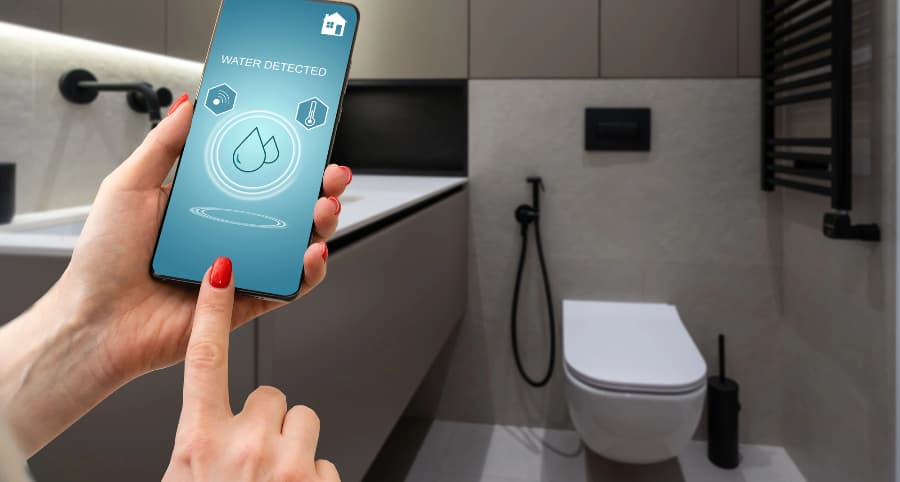How does a water sensor work and why connect one to your Toledo smart home?

One tiny leak in your home can result in major issues and thousands of dollars in damage. You need to defend against this threat; luckily, there’s a straightforward way to accomplish this. A water sensor is an effective, simple, and economical solution. See how they work and why you should connect water sensors to your Toledo smart home.
How water sensors protect Toledo homes
Water penetrates homes in numerous ways, whether from a weather-related event, plumbing failure, appliance malfunction, or just human error. However it occurs, you must know at once, and this is where water sensors come in. But how exactly do they work?
Most water sensors are conductive and function with two electrodes. When water reaches the electrodes, an electrical link is formed, activating your alarm. You’ll also discover capacitive sensors that release an electrical field. Your alarm sounds when water contacts the conductive parts of these devices and disrupts the field. Optical sensors employing infrared LED light are an additional option.
Get more from your water sensor
A few advanced water sensors give you even more protection as they feature incorporated temperature sensors. This is an outstanding tool in preventing frozen pipes. If there’s a severe reduction in temperature, you’ll find out at once. Taking action before pipes burst will save you from water damage and exorbitant repair costs.
Why connect water sensors to your Toledo smart home?
When water emergencies arise, you must be notified immediately. You can reach this aim by incorporating water sensors into your smart home. Whether you’re on site to hear the alarm or somewhere else, you’ll get an immediate notification on your smartphone. In addition, your 24/7 monitoring team will be alerted. Every second counts in a water emergency to minimize the destruction and disruption to your family.
Where should you install water sensors?
Any location at risk of water infiltration is an appropriate position for water sensors. Consider installing in these locations:
- Bathrooms: Attach in back of toilets or close to bathtubs.
- Basements: Water commonly seeps into lower floors via cracked walls or because of excess rain or faulty sump pumps.
- Near water heaters or appliances: Any water-connected appliance may leak in time.
- Below sinks: Water sensors are perfect for detecting pipe leaks in locations you can’t see.
- Attics: Detect roof leaks quickly and prevent expensive repairs.
Get water sensors with your Vivint smart home
Give your residence the robust protection it deserves with Vivint’s innovative components. Our water sensors in Toledo connect to your Vivint smartphone app to provide immediate updates whenever your alarm goes off. You also get built-in temperature sensors to prevent pipe freezing. Learn more about the smart home components available in Toledo by reaching out to (419) 614-6278 today.
